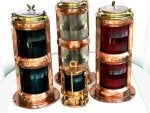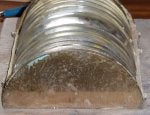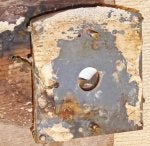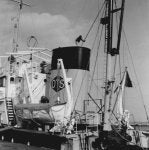My late father left me a light that is similar in size and shape to a small ship's navigation light. It is copper and at the moment has plain glass instead of a lens. It has a brass hinged lid kept in place with two dogs and a brass name plate which says "METEORITE" and the number 25372. The odd thing about it is that its arc of visibility is 180 degrees. There are no vents which would indicate that it was not made for oil burning. It is portable in that it has a handle on the top and a brass fixing plate on the back.
Are there or were there any rivers or inland waterways that required a light with 180 degree arc of visibility. Could this light have come from a tug?
Is there anyone out there who can shed some light on this lamp? (no pun intended)
Are there or were there any rivers or inland waterways that required a light with 180 degree arc of visibility. Could this light have come from a tug?
Is there anyone out there who can shed some light on this lamp? (no pun intended)












